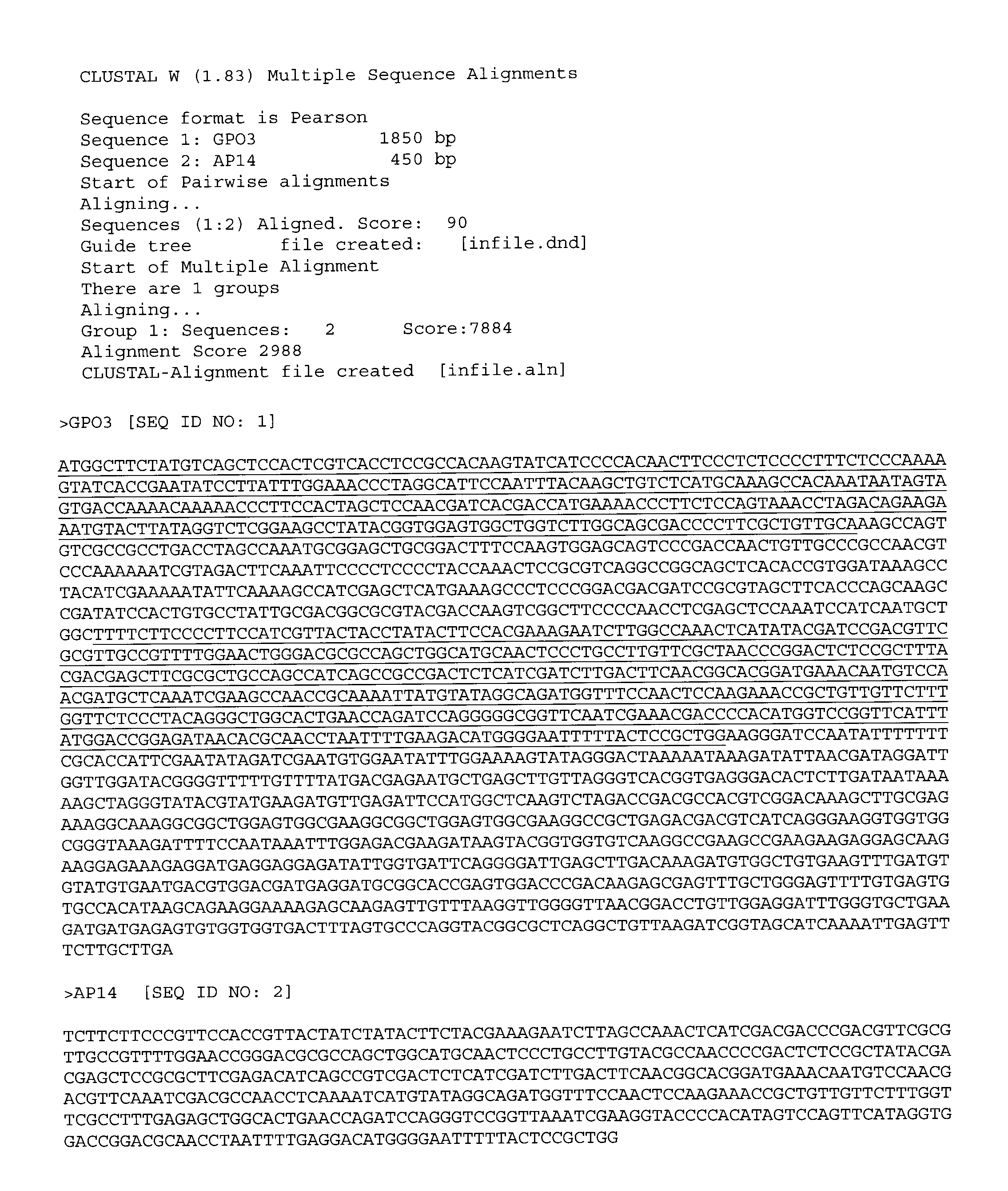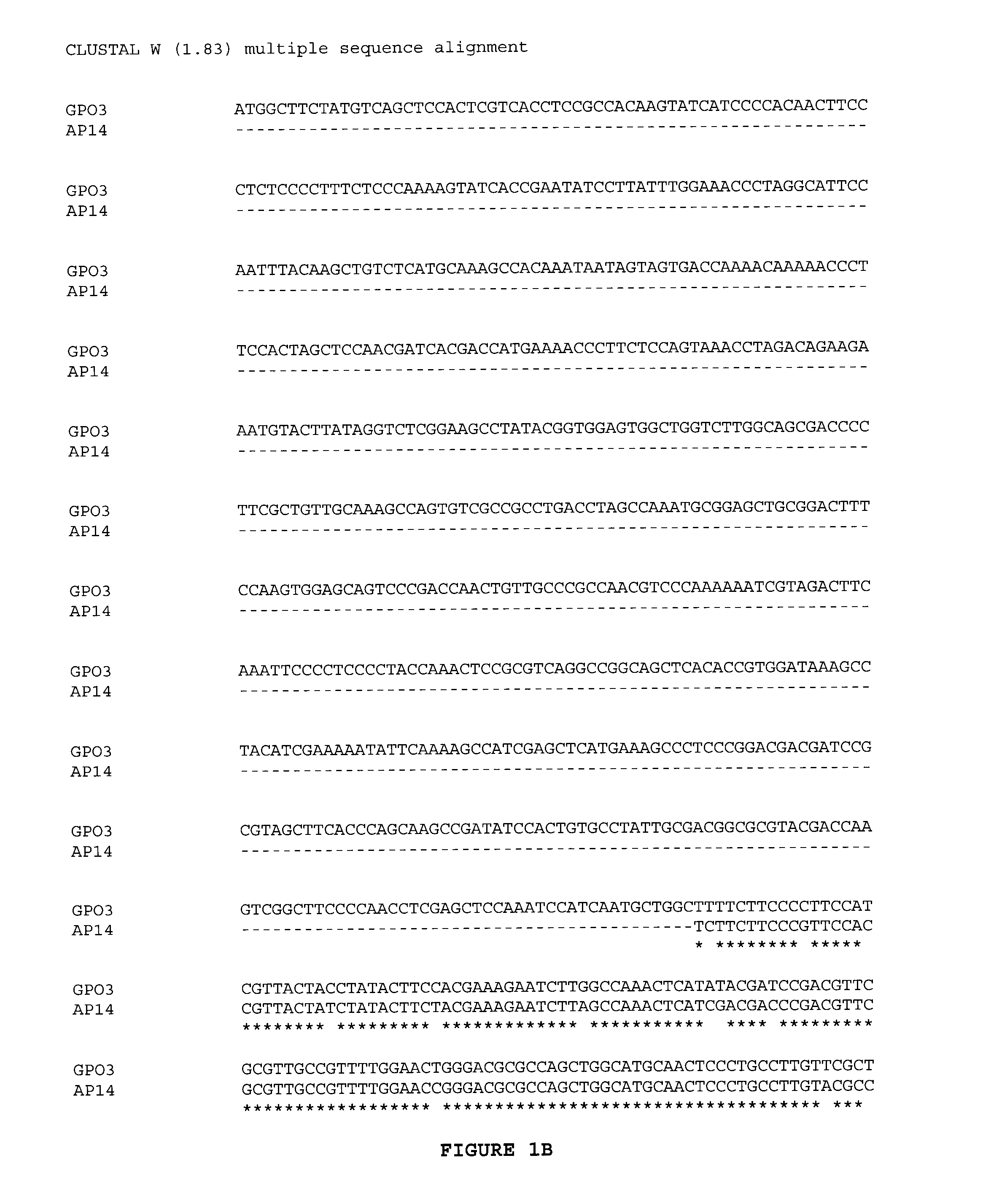Genetically modified reduced-browning fruit-producing plant and produced fruit thereof, and method of obtaining such
a technology of reduced browning and fruit-producing plants, applied in the field of genetically modified fruit-producing plants, plant cells, seedlings, or produced fruit, can solve the problems of reducing quality, affecting flavor and nutritional changes, and reducing opportunities, so as to reduce the activity of total polyphenol oxidase (ppo), reduce the browning in the fruit, and reduce the effect of activity
- Summary
- Abstract
- Description
- Claims
- Application Information
AI Technical Summary
Benefits of technology
Problems solved by technology
Method used
Image
Examples
examples
1. Reduction of a Single PPO Gene in Apples
[0173]In an illustrative example, the inventors have used a 250 bp fragment of AP14 between the Cu binding sites (or that includes one of the Cu binding sites) in the antisense orientation under control of the CAMV35S promoter (PCAMV35S) and Nopaline Synthase terminator (TNOS), which fragment was cloned into the binary vector pBINPLUS (van Engelen et al. 1995) to create the vector GEN-01. It was believed that the homology between all PPO sequences was sufficient that targeting any one of them would result in sufficient reduction of total PPO expression.
[0174]AP14 is highly homologous to GPO3 at the 5′ end. Over the region of AP14 cloned and sequenced, AP14 is 90% identical to GPO3 at the nucleotide sequence level, and 81% identical to GPO3 at the amino acid level (FIG. 1). However, there is a change in the AP14 coding sequence that generates a translational stop codon in the AP14 sequence, and approximately 43 base pair (bp) downstream of t...
PUM
| Property | Measurement | Unit |
|---|---|---|
| Fraction | aaaaa | aaaaa |
| Fraction | aaaaa | aaaaa |
| Fraction | aaaaa | aaaaa |
Abstract
Description
Claims
Application Information
 Login to View More
Login to View More - R&D
- Intellectual Property
- Life Sciences
- Materials
- Tech Scout
- Unparalleled Data Quality
- Higher Quality Content
- 60% Fewer Hallucinations
Browse by: Latest US Patents, China's latest patents, Technical Efficacy Thesaurus, Application Domain, Technology Topic, Popular Technical Reports.
© 2025 PatSnap. All rights reserved.Legal|Privacy policy|Modern Slavery Act Transparency Statement|Sitemap|About US| Contact US: help@patsnap.com



